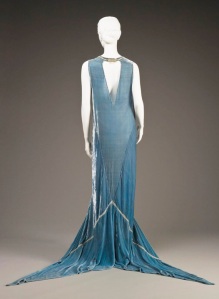Preserving Touchstones of the Past
by Elyssa Jechow
When one thinks of contemporary issues in the art world, the words “conservation” and “preservation” don’t automatically jump to mind. They are about the antithesis of the contemporary, by definition, but the two words — and the concepts and practices behind them — are unbelievably relevant. In our hurry to forge ahead in innovation and stay current with the rapid-fire exchange of information, we may neglect to slow down long enough to recognize the importance of tradition and its relevance to moving forward.

Needlework was one of the few ways women were educated in early America. Its preservation provides important insight into everyday life. Image courtesy of www.irvingparkartandframing.com.
“The study of artifacts gives us a window into everyday life,” says Newbie Richardson, a clothing and textile conservator for the Costume Society of America and co-founder of Costume and Textile Specialists. For her, personal connections with the past have the utmost importance: “It is extremely important to save material culture. Take needlework, for example. It speaks of early women’s education. It is the only way women in our culture were truly allowed to express themselves.” Material culture tells us where we were, how far we have come, and suggests where we might go.
Bruce Schuettinger is a wooden artifacts conservator and President at Schuettinger Conservation Services, Inc. in the Baltimore area. When asked how he thinks material objects can help understanding of national identity, he replies, “When you think about conservation, it means ‘to conserve.’ That could mean a dance, a dress, the usage of words and phrases – not just material items. Look at UNESCO’s concerns worldwide.”
The underlying UNESCO mission is to promote peace through preserving culture. Pondering on Schuettinger’s thoughts, and deriving a few of my own, though, it seems that peace promotion through preserving culture has other insinuations. If we understand our own culture and traditions, we might have a greater appreciation and tolerance for another. Self-appreciation in the form of visiting a history museum or document archive doesn’t mean to be in awe of the irrelevant and mundane. It means to learn, to be exhilarated, and to understand the broader implications of traditions and the past.

A 1920s-era garment, preserved by the Costume Society of America. Image courtesy of www.costumesocietyofamerica.com.
Richardson is onto something with her appreciation for the preservation of personal items. I begin to think about own family’s history preserved in artifacts, and these touchstones helped me to better understand not only my own family history, but the world at a certain point in time, and the world around me now. When I was 17, I read my grandmother’s carefully preserved diary from her 17th year, 1936. She wrote of life as a college freshman in a small town in southeast Texas during the Great Depression. Then I think about a newpaper photo of my grandmother’s sister Eleanor. The caption reads, “…she was doing graduate work at Columbia University in New York in 1929 when the stock market crashed…she was commissioned to work in Syria…travelled from Paris to Istanbul on the Orient Express…” My mind next travels to this particular great aunt’s wedding dress, which has been beautifully preserved. She was an “old” bride when she married in 1936 at the age of 28. She didn’t wear white. She wore navy blue.
My reading of that diary reflects the importance of the work that Richardson, Schuettinger and others undertake. The items of my family connect me to an individual, a family, a community and a larger society from decades past. I watched a woman, my great aunt, push the envelope in social norms through her will to attend graduate school, travel Paris, Syria and Istanbul, and wait to get married — wearing blue. I may have even learned a bit about myself as I saw a stubborn streak that looked more than a bit familiar. In short, preserved “artifacts” taught me about a family always in formation and a society always in evolution — that even in a time that we don’t consider particularly liberal, some were still thinking outside the box.
These thoughts bring me back to something Schuettinger said. “As we become more homogenized, interesting trading begins to take place. When a culture becomes more wealthy, they tend to want to bring back a lot that has found its way out of their borders.” His case in point is China. The country, though, has become a place of vast assembly lines and industrial innovation, and a formidable world power. Even so, evidence exists that that there is a desire to look back and to understand. “They are in an active market searching for objects that have left their culture,” he says. “The market reflects that. Though we are all becoming one in some respects, there is this desire to bring back important parts of culture and understand them.”
Aunt Eleanor would agree.
*****
To view more articles on the arts and national traditions, click here.


Trackbacks & Pingbacks